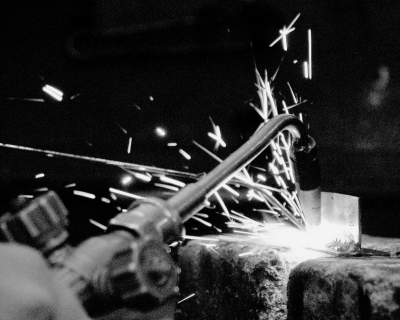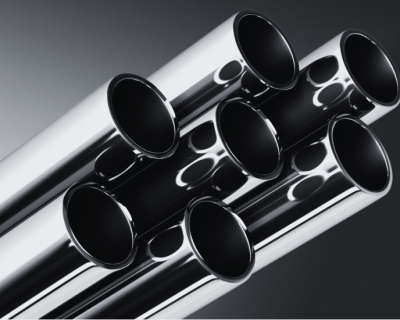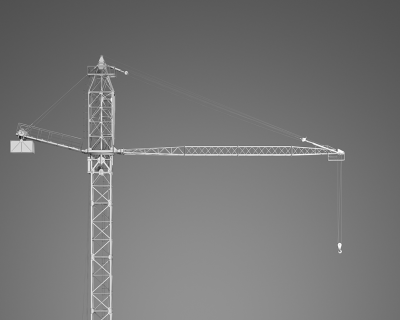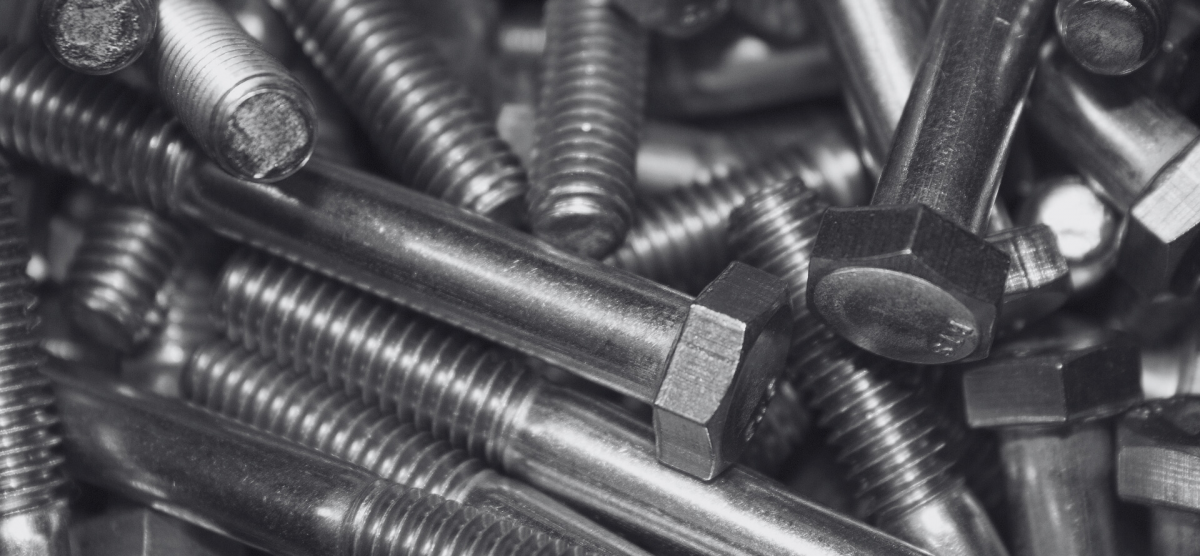
Bolts
Steel structures are the foundation of modern buildings and bridges. But how do these individual steel components come together to form a strong and reliable structure? The answer lies in two crucial techniques: bolting and welding.
This blog post dives deep into the world of bolted connections, explaining their types, applications, and the essential details you need to know
Bolts and their types
Bolts, also known as fasteners, are structural components that can be bottled and welded together. They provide a reliable method for joining steel elements together, complementing welding techniques.
Anatomy of bolts:
Bolts consist of several key components, including the grip, which represents the distance from the bolt head to the back of the nut or washer. Understanding the grip is crucial as it determines the effectiveness of the bolt in holding components together.
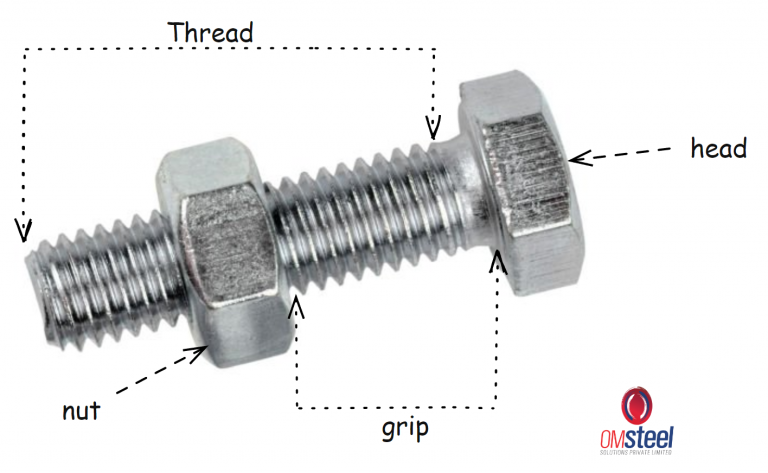
Anatomy of a bolt
Additionally, the length of the thread on the bolt, known as the thread length, influences the strength and stability of the connection.
Depending on whether the thread is included or excluded from the shear plane, bolts can be classified into two types. While both types of bolts have threads running along their shaft, which allows them to be securely fastened into a threaded hole or nut, they are both load-bearing.
1. Included (N-type bolt): As the name suggests, here the threads are included in the shear plane. The threads terminate before reaching the head of the bolt. In N-type bolts, the threads intersect or participate in the bearing or shear resistance of the bolted connection and hence, are used in applications where the load is transferred through both the shank and threads of the bolt.
2. Excluded (X-type bolt): In X-type bolts, the threads are excluded from the shear plane. The threads in an X-type bolts end midway on the shaft. Here, the threads do not intersect or participate in the bearing or shear resistance of the bolted connection and hence are often used in applications where the load is primarily transferred through the shank of the bolt, rather than the threads.
Types of bolts
There are various types of bolts that are readily available and also serve multiple purposes as per the user’s requirements. A few of the commonly used types are:
- A307: This is one of the most affordable and economical bolts available, although they lack the high strength required to handle the primary connections. It finds its use as a shipping bolt, and is usually used in girts and purlins connections (purlins are roof element and provide support for the weight of the roof sheeting; girts are wall elements and provide support for wall cladding) They are available in two grades: in Hex (Straight head) and Countersunk (angled head) head type.
- High strength bolts (A325 and A490): These bolts are designed to provide greater strength and durability compared to A307 bolts, making them suitable for primary connections in structural steel construction. A325 bolts are typically used for medium-strength structural steel, while A490 bolts are used for high-strength structural steel. It’s important to note that A325 Type 3 bolts are specifically designed for use with weathering steel (grade A588), which is known for its corrosion-resistant properties. Mixing bolts of different diameters, such as A325 and A490, on the same project should be avoided to maintain uniformity in structural integrity and load distribution. This ensures consistency and reliability in the construction process, reducing the risk of structural failure.
(Refer Part 7 ‘Design considerations for bolts’, and Part 16 ‘Specification for Structural Joints using High Strength Bolts’ of the structural steel manual by AISC)
Washers
Washers play a vital role in bolted connections by spreading pressure evenly over a larger area, reducing the risk of damage to the base material during tightening.
Hardened steel washers are used to spread the pressure resulting from the bolt tightening process over a large area in structural steel connections so as to prevent damage or ‘galling’ of the base material while bolt tightening.
Circular washers are the standard choice, while tapered washers are preferred for surfaces with sloped angles, ensuring a secure fit and enhanced stability.
Types of bolted connections
Understanding the two primary types of bolted connections; bearing type and slip-critical type is essential for structural engineers.
Bearing Type Connections:
Bearing type connections rely on the bearing resistance of the connected materials to transmit loads. In this type of connection, the plies of the material being fastened may slip slightly under load, causing the shank of the bolt to bear against the material. The load is then resisted by the bolt bearing against the holes in the connecting material. This snug-tight bearing condition ensures firm contact between the plies without full tensioning of the bolt. Bearing type connections are suitable for applications where the connected members are subjected to primarily compressive loads.
Slip Critical Type Connections:
Slip critical connections, formerly known as friction type connections, rely on friction between the connected parts to resist loads. As the bolt is tightened or torqued, tension is developed in the bolt, clamping the connection material together and creating friction. This frictional resistance enables the connection to withstand applied loads without slippage or movement between the connected members. Slip critical connections are particularly suitable for applications where the connected members are subjected to tensile or shear loads, such as in tension members or high-load bearing connections.
Methods of tightening bolts
There are around 4 ways in which the bolts can be tightened depending upon where the bolt is being used and each comes with it’s own set of characteristics and applications:
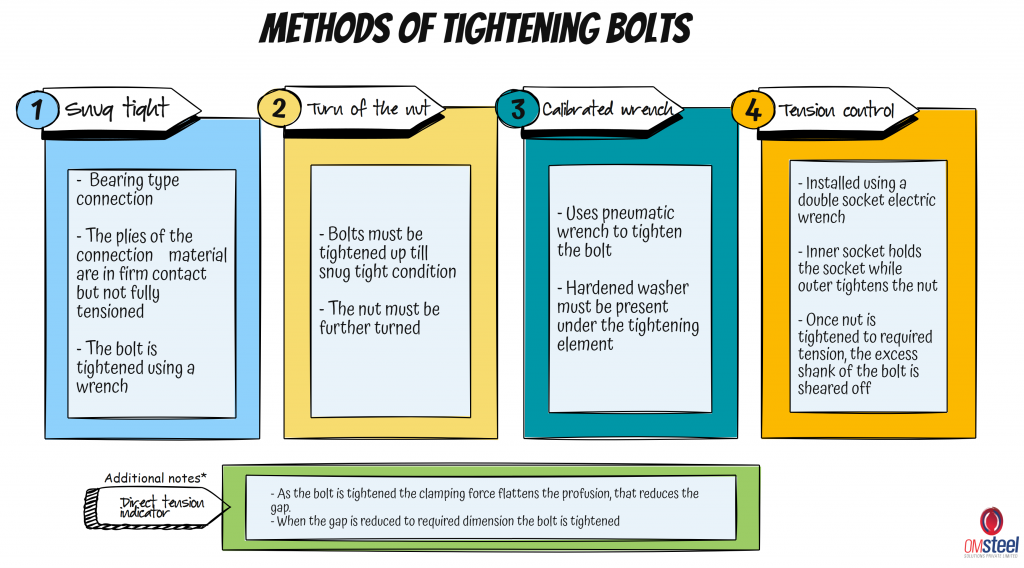
Methods of tightening bolts
Tightening clearances
Tools require specific clearances to facilitate the proper tightening of bolts.
Clearance must be available to accommodate the insertion and tightening of bolts using an impact wrench. The clearance criteria differ between conventional high-strength bolts (ASTM A325 and A490) and high-strength tension-control bolts (ASTM F1852 and F2280).
Bolt holes
The nominal dimensions of standard, oversized, short-slotted, and long-slotted holes for high-strength bolts must either match or be smaller than those outlined in the table below. Holes exceeding the dimensions in the table are permissible only when explicitly specified or approved by the Engineer of Record.
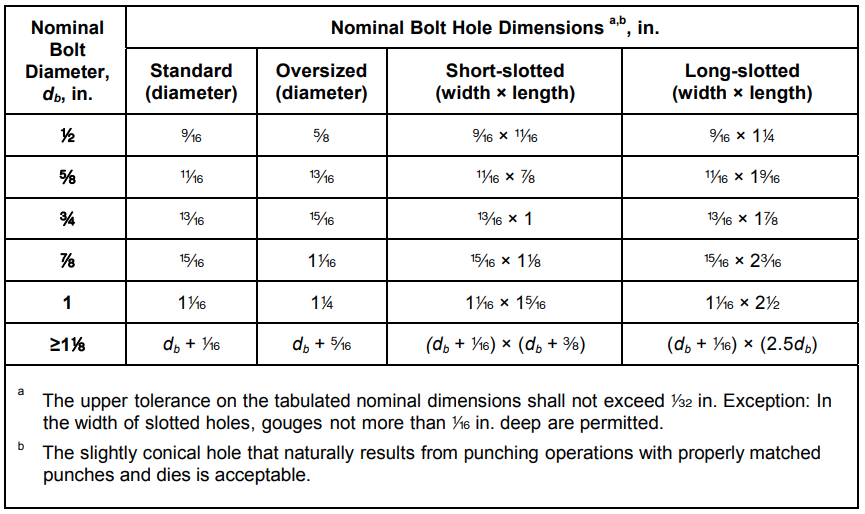
Nominal bolt hole dimensions
- Standard Holes:
Standard holes are precisely sized openings typically drilled or punched into structural components to accommodate bolts. These holes are designed to match the diameter of the bolt shaft, ensuring a snug fit and optimal load-bearing capacity.
2. Oversized Holes:
Oversized holes are slightly larger in diameter than standard holes, providing a degree of adjustability during assembly. They allow for minor variations in alignment between connected components, offering flexibility in the construction process.
3. Short Slot Holes:
Short slot holes, also known as slotted holes or short-slotted holes, are elongated openings rather than circular holes. They are commonly used in scenarios where adjustments or movement between connected members is anticipated. Short slot holes provide a range of movement along the slot, accommodating variations in alignment or positioning.
4. Long Slot Holes:
Long slot holes, or long-slotted holes are elongated openings in structural components, typically used in bolted connections. Unlike standard round holes or short-slotted holes, long-slotted holes provide greater flexibility for adjustments or movement between connected members. They allow for a wider range of alignment variations and can accommodate changes in position or orientation during assembly. This versatility makes long-slotted holes suitable for applications where precise alignment is challenging or where minor adjustments may be necessary.
(Refer Part 16, ‘Specification for Structural Joints Using High Strength Bolts’, Section 3 of the AISC manual for more information)
In closing, bolts serve as the backbone of steel structures, intricately connecting various components to form robust and reliable frameworks. From the anatomy of bolts to the types of bolted connections, this exploration sheds light on the critical role bolts play in modern construction. By understanding the nuances of bolted connections and their applications, structural engineers can design and build safer, more resilient infrastructure.




